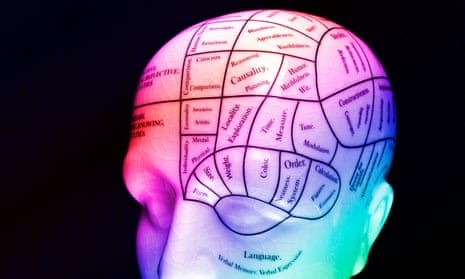It might come as quite a surprise to learn that, as a psychiatrist, if I ever had the misfortune to develop severe depression, my treatment of choice would be electroconvulsive therapy (ECT). Why? Well, to put it simply, ECT is the most rapid treatment for severe depression that we currently have to offer – with a recent study in the BMJ highlighting its effectiveness.
For the uninitiated, ECT is a medical procedure in which an anaesthetised patient has a small electrical current applied to their scalp in order to induce a seizure for the purposes of treating severe mental illnesses and occasionally neurological disorders too. Each treatment takes just a few minutes and is usually administered two or three times a week. ECT course length varies depending on the needs of the patient, but on average eight to 12 treatments are given.
It’s almost impossible to discuss ECT without the word “barbaric” being used. For anyone who is familiar with the psychiatric era of One Flew Over the Cuckoo’s Nest, this is understandable. But things have moved on a great deal since then. Indeed, if you’re looking for a “b” word to describe the process of contemporary ECT, top of my list would be “boring” – the use of a general anaesthetic and muscle relaxant means there’s probably more drama involved in having a filling than ECT.
That’s not to say ECT isn’t a significant intervention, but treatments should always be considered in relation to the condition that needs to be managed. Most people would be totally opposed to the idea of a surgeon amputating their leg. However, if there was an infection rapidly rising from their foot and an amputation was the best option to save their life, I suspect most people would then see it as a necessity. Context is key.
With that in mind, it’s important to be clear about the term “severe depression”. This is most definitely not sadness, an integral part of our universal human experience. Neither is it mild to moderate depression: sustained low mood and/or the inability to experience pleasure, accompanied by negative thoughts and changes in bodily functions such as sleep, appetite, energy and libido. This distressing and disabling condition might benefit from improving sleep, diet and physical activity, a talking therapy and perhaps an antidepressant.
“Severe depression” refers to the pointy end of the depression spectrum, when your mind and body spirals into shutdown. Thinking becomes so overwhelmingly negative that you may feel totally hopeless. Nihilistic delusions may emerge, such as the unshakeable belief that your body is rotting away. Auditory hallucinations may say awful things to you. Suicidal thoughts can become constant and irresistible.
In liaison psychiatry, we see individuals so severely depressed that they have become catatonic – a state that means they may be unable to move, speak or eat. Admission to a medical ward is required in order to give nutrition via a nasogastric tube and medication to reduce the risk of dangerous blood clots forming due to immobility – seeing one of these patients, you’d be forgiven for thinking that the reason for admission was stroke rather than depression.
It’s possible to primarily treat these people with medications such as an antidepressant, antipsychotic or mood stabiliser such as lithium. However, they can take several weeks to be effective, if indeed they are going to be effective at all, and in the meantime the individual remains in a life-threatening state.
I have seen many people in a catatonic state respond really well to ECT. Sometimes, in just a couple of treatments, they go from being speechless and immobile to talking and walking – it’s amazing to witness. Unfortunately, for others, ECT is ineffective – one of the frustrations of being a doctor is sometimes not knowing why treatments can work brilliantly for one person but not another.
A common criticism of ECT is that we don’t know exactly how it works and therefore it shouldn’t be trusted. If we were to apply this logic consistently there would be many other effective treatments which we would have to give up too. Although paracetamol has been in use for over 100 years, we still don’t know exactly how it works, but that doesn’t stop millions of us popping a couple of tablets when we have a headache.
Undoubtedly, it would be better if we could be clear about how ECT works, not least because this might help us to develop better treatments – current theories around neuroplasticity, neurotransmitters and inflammation offer fertile ground for innovation. But while we are where we are, I believe we have a responsibility to offer people who have this life-threatening illness one of the best treatments that we currently have.
When I raise the possibility of ECT with patients and their carers, their response is often one of fear, arising from outdated ideas about the treatment. With accurate information most see ECT more positively, but still worry about what others might think. As is often the case with mental illness, insult is added to injury by layers of stigma and shame.
Of course, if you or a loved one ever find yourself in a situation where ECT is on the cards, this should be discussed thoroughly with your psychiatrist. ECT is not suitable for everyone and, like any other treatment, has potential side effects such as headaches, nausea and memory problems.
It has been with us for more than 80 years, so the fact that it remains one of the best treatments for severe depression is rather disheartening. That said, hope is being generated by new research into treatments such as anti-inflammatories, other forms of neurostimulation, ketamine and psilocybin. I look forward to the day when I won’t have to say that ECT would be my treatment of choice if I were to develop severe depression because a better option will be available. But, for now, it’s one of the best treatments we have to tackle this life-threatening illness.
